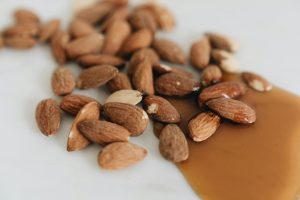Polynesian Underground Ovens: Modern Takes on Traditional Imu Cooking
Imagine yourself on a peaceful, tropical island surrounded by crystal clear waters and lush greenery. The sun is shining down on you as you take in the beautiful scenery. As you walk through the village, the aroma of mouth-watering food fills the air. You follow the scent to a gathering of locals, huddled around a pit in the ground. This is where the magic happens – the traditional Polynesian imu cooking. But, did you know that this ancient cooking method has evolved into modern takes, still keeping the essence of its roots? Let’s dive into the world of Polynesian underground ovens and explore the modern twists on the traditional imu cooking style.
Rising from the Depths of History – The Traditional Imu Cooking
The imu oven, also known as a lovo, is an underground cooking pit typically used in Polynesian and Hawaiian cultures. It is a method of cooking food in an underground oven that is heated with hot rocks and covered with layers of leaves for insulation. The imu was widely used in these cultures as a way to cook large quantities of food for special occasions like weddings, celebrations, and religious ceremonies.
The Process behind the Perfectly Cooked Meal
The imu cooking process begins with digging a pit in the ground, usually about 3-4 feet deep. Lava rocks are then placed at the bottom of the pit and lit on fire until they turn red hot. Once the rocks are hot enough, the food is placed on top of them in layers, starting with protein like fish, chicken, or pork, followed by starchy vegetables like taro, yams, and sweet potatoes. The food is then covered with leaves and cloth, creating a steamy and smoky environment, and left to cook for several hours.
The Unmistakable Taste of Tradition
The result? A mouth-watering and flavorful feast that has been infused with the earthy and smoky flavors of the underground imu oven. The long cooking process at a low temperature gives the food a tender and succulent texture, making the flavors more intense and delicious. The imu method of cooking is not only a unique way of preparing a meal, but it is also a cultural experience in itself.
Bringing a Twist to Tradition – Modern Takes on Imu Cooking
As the world becomes more interconnected, so does the influence on different cultures and their traditions. With this, the imu cooking style has also evolved into modern, innovative takes, while still preserving the essence of the traditional method.
Replacing the Imu Pit with Above-Ground Ovens
In some cases, the underground cooking pit has been replaced with above-ground ovens, using modern appliances such as gas, electricity, or even solar power, instead of hot rocks. The food is still cooked in layers, using different materials like banana leaves and foil, to create a similar steaming and smoky effect. This makes it more convenient and accessible to prepare an imu-style meal without the need for a large pit.
Incorporating Global Flavors
The imu cooking method has also been adapted to incorporate global flavors and ingredients. Instead of the traditional Polynesian or Hawaiian spices, there have been modern additions like herbs, spices, and seasonings from different cultures, creating a fusion of flavors. This adds a unique twist to the traditional imu style, making it more appealing to a wider audience.
From Main Course to Dessert
The imu cooking style has also been expanded beyond the main course, with modern takes on traditional imu desserts. One example is the imu-style pineapple, where the fruit is cooked in an imu oven with sugar and spices, resulting in a sweet and caramelized dessert. This twist on the traditional method has opened up new possibilities for delicious imu-inspired dishes.
The Tradition Lives On – Imu Cooking Today
In the Polynesian and Hawaiian cultures, imu cooking is still an integral part of their traditions and is incorporated into many celebrations and feasts. It is a beautiful way of connecting to their heritage and sharing it with others. And with the modern twists on this ancient cooking method, it has also become a way to share and connect with people from different cultures.
In conclusion, Polynesian underground ovens, or imu cooking, is not just a way of preparing a meal, but it is a cultural experience, rich in flavor and tradition. With the evolution of modern takes on the traditional method, it has become a bridge that connects cultures and flavors, making it a true representation of the diverse world we live in.











